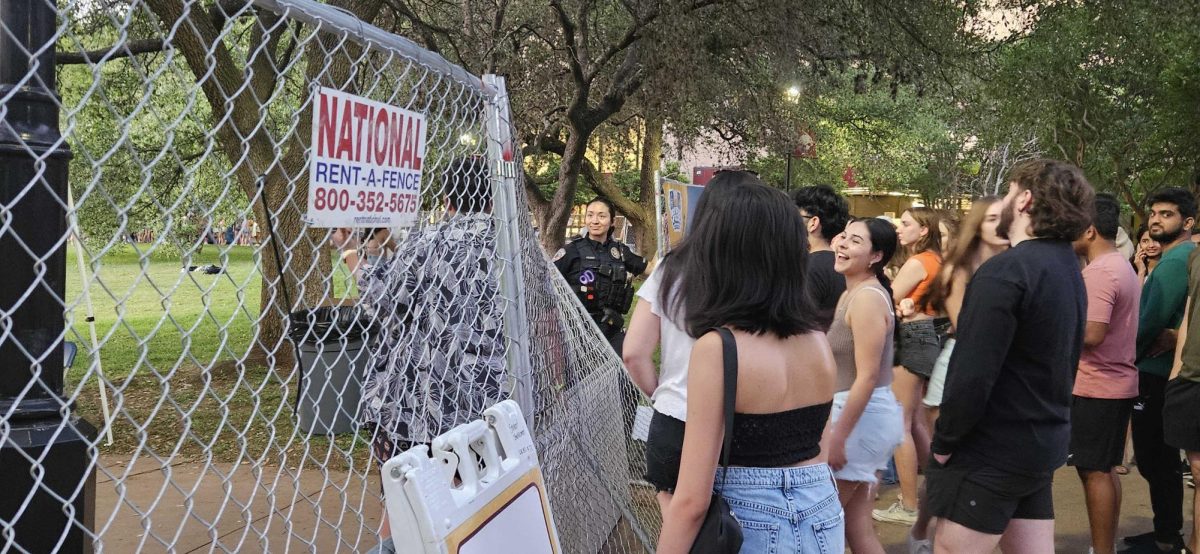The U.S. Department of Education defines a Hispanic-Serving Institution (HSI) as an institution of higher education with a Hispanic student population of at least 25 percent for undergraduate, full-time-equivalent students. Only 15 percent of higher educational institutions in the US are HSIs, yet these HSIs are responsible for enrolling 65 percent of LatinX undergraduates. In 2010, Texas State surpassed the 25 percent Hispanic undergraduate enrollment level and was granted the status as an HSI in March 2011.
Many students are only faintly aware of the implications behind what it means to be an HSI. One of the main reasons for an institution to apply for HSI status is to obtain grant money. However, the title of an HSI does not guarantee funding, and the funds the institution secures through the HSI program do not have to be allocated toward programs designed specifically for Hispanic students. In 2012, Texas State was awarded $456,387 in federal funds under the HSI program.
In March of 2011, after being granted status as an HSI, University President Denise Trauth said achieving HSI status meant the establishment of new goals, such as improved student retention and graduation rates. Texas State is also the fourth — and largest — HSI in the state. The Office of Media Relations states that funds from the HSI program may be used for scientific and laboratory equipment, construction or renovation of instructional facilities, faculty development, purchase of educational materials, academic tutoring or counseling programs, distance learning programs, teacher education, student support services, along with other activities and services.
Texas State boasts many achievements in relation to its Hispanic and LatinX population, such as being one of the top 100 colleges for Hispanic degree earners in 2010 because of its graduation rates, which for Hispanic students is at 50 percent, while the rate for all of Texas is at 40 percent. Texas State is also one of the largest public universities in the state designated as an HSI. Despite having these credentials, though, Hispanic students at Texas State are still greatly disadvantaged.
Being an HSI should not just be about enrollment and graduation rates, though those are crucial statistics for Hispanic and LatinX communities when deciding what university to attend. Texas State needs to be able to codify what it means to be a Hispanic and LatinX-serving institution, and enrollment is not the core definition of serving.
In 2014, only 15 percent of young LatinX adults aged 25-29 held a bachelor’s degree, compared to 41 percent of young, white adults, 63 percent of young Asian-American adults and 22 percent of young black adults. This is despite that Hispanic people make up the second largest ethnic group in the country. Hispanic and LatinX students fall significantly behind other ethnic groups when it comes to higher education. The funds received from the HSI program should be allocated to programs that specifically serve the university’s Hispanic and LatinX community, and aid students in obtaining a four-year degree.
Hispanic and LatinX students face a series of different hurdles than other populations at Texas State, some revolving around cultural expectations. Hispanic men are socialized to be financial providers for their families and may feel the pressure to drop out to help support their families. Hispanic women are socialized to be caregivers and can also find themselves facing an ultimatum between their families and education. These are very specific issues that the Hispanic community faces and Texas State should be prepared to aid students through these situations.
There is also an air of anxiety that Hispanic and LatinX students face due to the current political climate in the U.S. The recent uptick of deportations, the uncertainty around the future of the Deferred Action for Childhood Arrivals act, and conduct of immigration detention centers are all catalysts for Hispanic and LatinX students to struggle with mental, and even physical health while also trying to continue their post-secondary education.
One way to adequately represent its Hispanic and LatinX students would be Texas State to hire more Hispanic and LatinX faculty. However, as of fall 2018, there are 1,062 white full-time faculty and only 151 Hispanic full-time faculty members. For the staff members of Texas State, 1,297 are white and 685 are Hispanic. And while there is a counseling group for immigrant support and empowerment for students with DACA status offered through Texas State’s Counseling Center, there is no counseling program implemented specifically for Hispanic and LatinX students.
Texas State prides itself on being a Hispanic-Serving Institution but is not doing much more than the bare minimum to serve its Hispanic students, especially when it comes to Hispanic and LatinX-specific issues. Texas State only recently got an immigration lawyer after student activists pushed for one during a sit-in protest in April 2018. More can and should be done for Texas State’s Hispanic and LatinX populations, especially because that community is particularly vulnerable in higher education. Being a Hispanic-Serving Institution is more than a title and a way to get grants. Serving that population should be the main priority with the funds gained through the HSI status.
– Carissa Liz Castillo is an English senior













